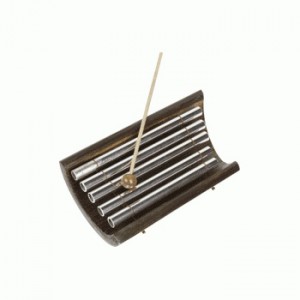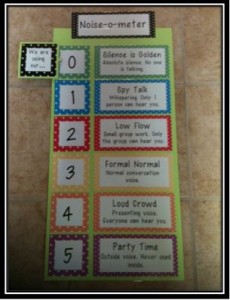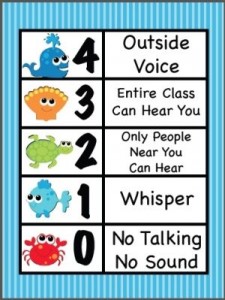Noise Control Strategies for the Classroom
November 3, 2013
Getting students to quiet down quickly and quietly, be aware of noise level expectations at different times of the day, and modulate their voices accordingly is important for effective classroom management. Here are some strategies and tools for doing so:
Teach and Implement Quiet Signals
1. Auditory Quiet Signals
When teachers need students to stop talking in order to focus their attention on what the teacher is about to say (e.g., give directions), a good “quiet/focus” signal is needed. There are a variety of techniques and tools that can be used as quiet signals. Whichever one is chosen, as with any procedure – students need to be taught (through clear explanation, modeling and practice) to respond to the signal quickly. Clapping patterns (e.g., 2 slow, 3 fast) and students repeat the pattern back to you, a clear verbal signal (e.g., “Popsicles…Freeze!”), the sound of some instrument (e.g., chimes, xylophone, rainstick), a squeeze toy or other noisemaker that makes a novel sound, etc. are all possibilities – depending upon the teacher preference and age level of students.
2. Visual Quiet Signals
There are several visual signals that can be used to get students’ attention and to cue them as to appropriate noise level.
To get their attention: Teachers may use visual techniques such as: flashing the lights or raising their hand to signal students to raise their hands and stop talking.
Charts such as these great examples posted on Pinterest are wonderful visual cues for indicating the acceptable noise level in the classroom (or other school environments). Of course, students need to first be taught that different volume levels are appropriate depending on the activity or location, and what each of the levels are on the chart. Then, throughout the day or class period, the chart can be the tool used to remind and signal students about appropriate noise/voice level permitted for each activity.
http://teachingchick.blogspot.com/search/label/classroom%20management
http://indulgy.com/post/zKsIgPXwX1/classroom-management-idea
3.Cool apps and online noise control tools
Check out these free apps that monitor noise level in a classroom, available from iTunes. I haven’t personally used these apps or seen them in action, but from what I’m reading about them online, they sound interesting:
Too Noisy
The “Too Noisy App” has been designed to assist a teacher keep control of general noise levels in a classroom (and have students self-monitor their own noise levels) using a visual stimulus. As the noise level in a classroom increases beyond an acceptable level the noise level meter dynamically indicates the level of noise, and the background graphics within the app change to reflect the noise levels. Students are also able to self-monitor their own noise levels.
This free app can be run directly on the ipad or displayed on the classroom interactive whiteboard.
When the noise level is in appropriate level the background is blue, the face is smiling, and the dial is in the green zone.
See what happens when the volume is too high.
TooLoud!
The TooLoud! app records decibels, displaying the volume levels in numbers. Teachers can use it to let the class know when they cross the auditory line. Hook your iPad up to the projector and manage the working noise level in class by letting the students see the feedback for themselves. The data is also visualized in a live graph and in a sliding bar that indicates the rising levels of clamor and babble. Watch out for the red zone…time to bring the level down!
See more on this topic in my books and Pinterest Classroom Management board.
Tags: auditory signals, classroom management, noise level, quiet signals, Rief, visual signals, voice levels, volume control












